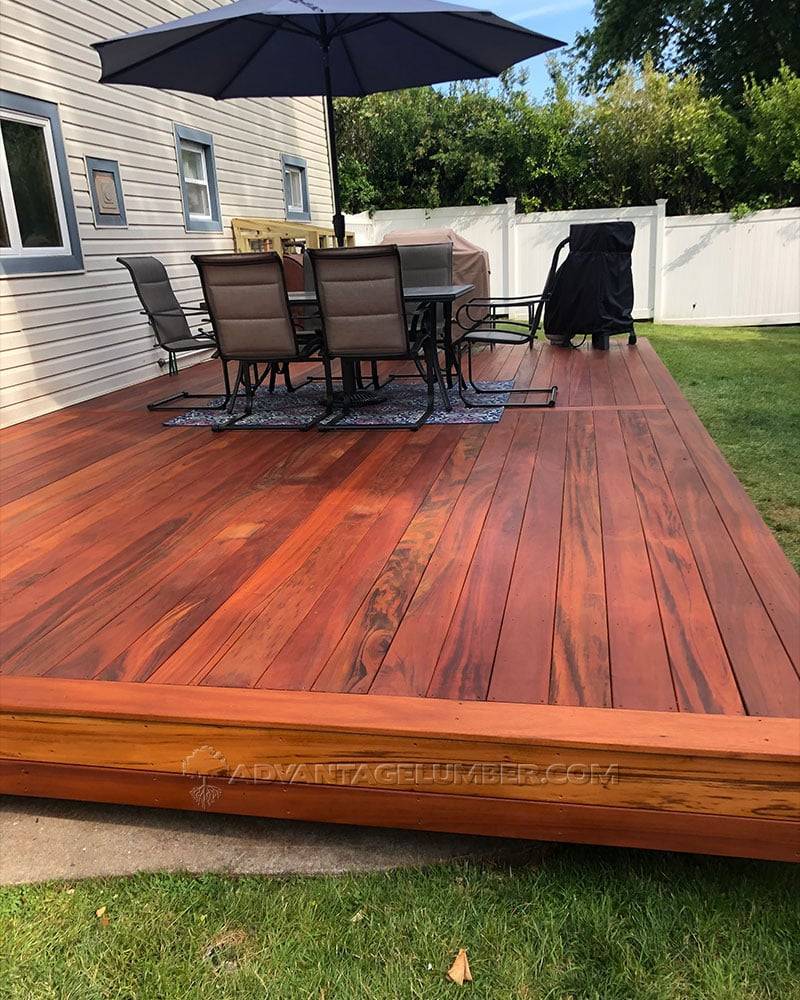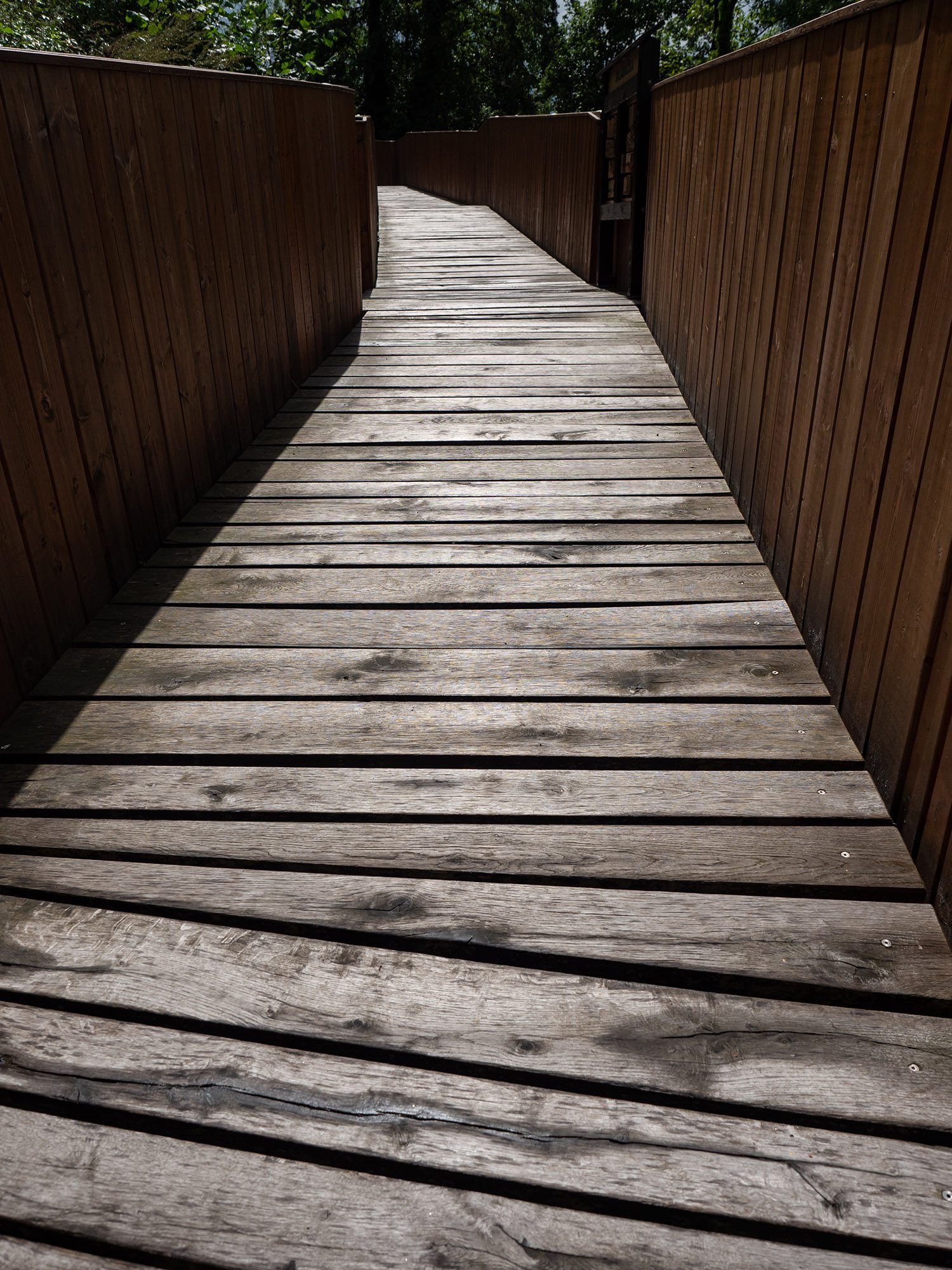Black locust is a hardwood native to the southeastern United States but now it grows in all of the Lower 48 States. Known for its durability and resilience, black locust has become a popular choice for decking.
If you’re considering using black locust for your decking project, it’s essential to weigh its advantages and disadvantages. Here’s a comprehensive look at the pros and cons of black locust decking.
Pros of Black Locust Decking
Durability: One of the primary reasons homeowners and builders choose black locust is its exceptional durability. It’s naturally resistant to rot, decay, and insect infestation, making it an excellent choice for outdoor applications.
Eco-Friendly: Black locust grows relatively quickly compared to other hardwoods, making it a sustainable choice.
Aesthetic Appeal: Black locust boasts a beautiful grain pattern with a range of colors from pale yellow to deep brown. Over time, it can develop a silver-gray patina, which many homeowners find appealing.
Strength: Black locust is very strong, making it suitable for high-traffic areas and capable of supporting heavy loads.
Longevity: With proper care and maintenance, a black locust deck can last several decades, making it a long-term investment.
Cons of Black Locust Decking
Cost: Black locust can be more expensive than some other decking materials such as Ipe, Cumaru, Garapa, Brazilian Redwood, Teak and Tigerwood.
Availability: While black locust is growing in popularity, it’s not as widely available as other decking materials. This limited availability can drive up costs and lead to longer wait times for procurement. Black locust trees tend to grow crooked and are rarely straight. They also don’t grow very wide unless you can find old growth trees. This makes sourcing longer black locust deck boards harder. Since wider logs are not as common cutting deck boards without the sapwood which is the non-durable part of the log can be difficult as well.
Maintenance: While it’s true that black locust is naturally resistant to many common decking issues, it’s not entirely maintenance-free. To maintain its color and prevent the silver-gray patina, regular cleaning and occasional sealing might be necessary. Applying an annual water sealer would help prevent water penetration and rot.
Hardness: While its hardness is a strength in terms of durability, it can also make black locust more challenging to work with. Special tools and expertise might be required to install a black locust deck.
Variability: Black locust can have significant variability in terms of color and grain pattern. While some homeowners appreciate this natural look, others might prefer a more consistent appearance.
Weight: Black locust is a dense wood, which can make transportation and installation more challenging compared to lighter materials.
Old Growth vs. New Growth: The reputation of black locust being very durable and rot resistant likely stems from the old growth timber. Much like old growth southern yellow pine vs. the new plantation grown southern yellow pine are completely different. The old growth lumber has much tighter growth rings and produces more consistent looking lumber as well as lumber that’s harder, more dense and noticeably more durable.
It’s hard to find these old growth black locust trees as a result you often are getting deck boards sourced from smaller new growth black locust.
Black Locust Decking Gone Wrong:
There are numerous projects that have been built with black locust that in a short time frame have found the lumber was not holding up as expected:
Queen’s Botanical Gardens, NYC:
https://woodweb.com/knowledge_base/Black_Locust_Durability_for_Outdoor_Decking.html
Brooklyn Bridge Park’s Squibb Bridge:
Below are two articles on the Squibb bridge that used black locust lumber. The bridge shut down due to the bridge bouncing a lot more than anticipated. There was a lawsuit and settlement payment and repairs that were done to the bridge to give it added strength.
The bridge reopened after repairs were made only to get shut down again shortly after due solely to the black locust wood showing signs of rot and early decay.
Inspectors determined the black locust wood was going to need much repair and ongoing maintenance and it would be cheaper to just replace most of the bridge.
https://bklyner.com/brooklyn-bridge-parks-plans-to-demolish-and-rebuild-squibb-bridge/
https://www.enr.com/articles/48124-steel-makeover-under-way-for-brooklyns-squibb-footbridge
As time progresses and more people share their feedback you will likely see more black locust projects that are failing earlier than expected. The new growth lumber is not the same as the old growth lumber many farmers built their fences with.
Black Locust Alternative
Tigerwood, known for its striking appearance, features a vibrant blend of rich, golden-brown to reddish-brown hues with dark streaks that resemble tiger stripes, giving it its name. This distinct patterning ensures that no two boards are exactly alike, this gives you a deck with a unique and exotic look.

There are many properties that make Tigerwood proven to perform better than black locust. It does not splinter and crack like black locust does when black locust dries out. Tigerwood is known to withstand 30+ years of harsh weather.
In addition Tigerwood is naturally resistant to mold, algae, rot, decay and wood boring insects. It’s an incredibly hard wood that is quite a bit harder than black locust. It is also a very dense tight grain wood that is very smooth but naturally slip resistant which makes it excellent for bare feet.
Conclusion
Black locust decking offers a history of durability however the new growth lumber is showing signs it’s not as durable as the old growth lumber. If you’re considering black locust for your decking project, do your research since using black locust for decking projects does not have decades of proven history. As a result we are seeing projects built 5 – 10 years ago that are showing premature failure.
